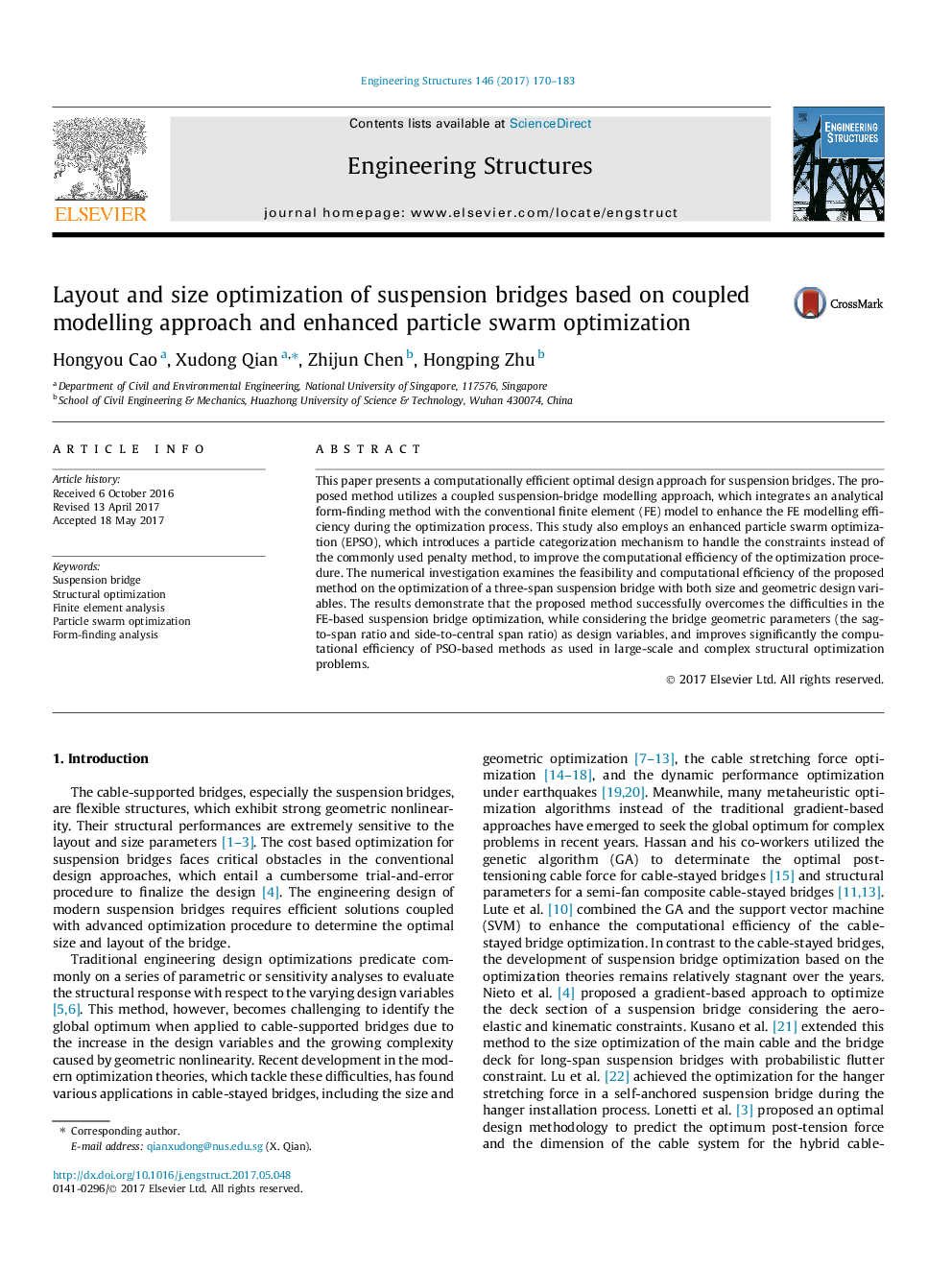| Article ID | Journal | Published Year | Pages | File Type |
|---|---|---|---|---|
| 4920126 | Engineering Structures | 2017 | 14 Pages |
Abstract
This paper presents a computationally efficient optimal design approach for suspension bridges. The proposed method utilizes a coupled suspension-bridge modelling approach, which integrates an analytical form-finding method with the conventional finite element (FE) model to enhance the FE modelling efficiency during the optimization process. This study also employs an enhanced particle swarm optimization (EPSO), which introduces a particle categorization mechanism to handle the constraints instead of the commonly used penalty method, to improve the computational efficiency of the optimization procedure. The numerical investigation examines the feasibility and computational efficiency of the proposed method on the optimization of a three-span suspension bridge with both size and geometric design variables. The results demonstrate that the proposed method successfully overcomes the difficulties in the FE-based suspension bridge optimization, while considering the bridge geometric parameters (the sag-to-span ratio and side-to-central span ratio) as design variables, and improves significantly the computational efficiency of PSO-based methods as used in large-scale and complex structural optimization problems.
Related Topics
Physical Sciences and Engineering
Earth and Planetary Sciences
Geotechnical Engineering and Engineering Geology
Authors
Hongyou Cao, Xudong Qian, Zhijun Chen, Hongping Zhu,
